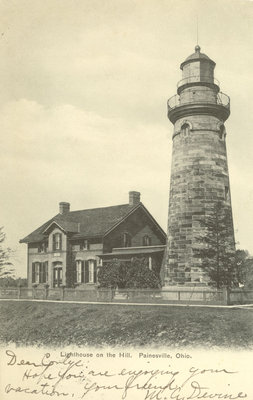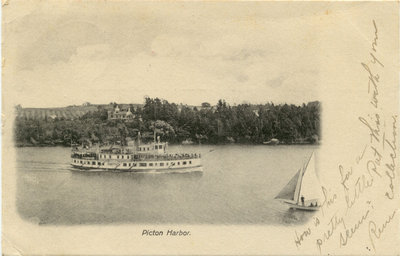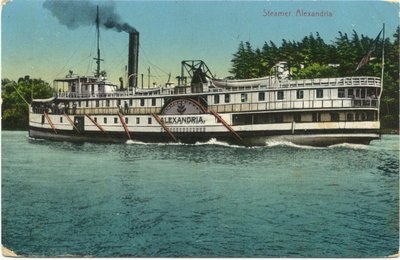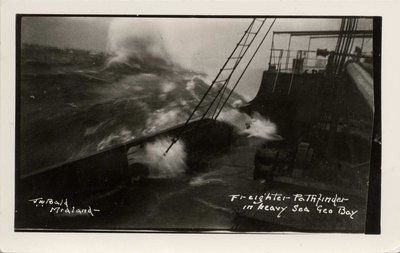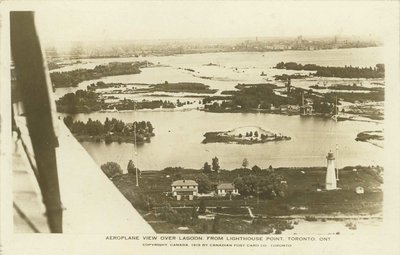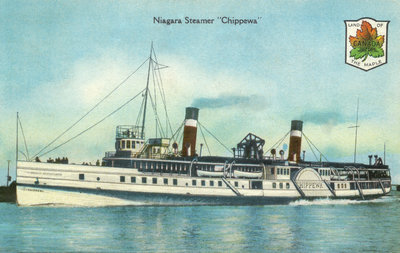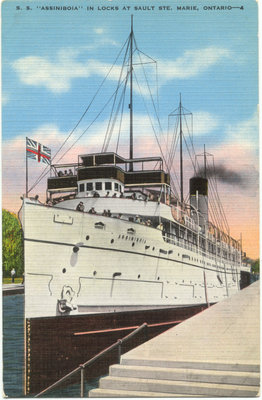Highlights from the collection
Postcards
Pages
Traditional photographsEngravingsStereoviewsChromolithographsPostcardsMaps and ChartsMagic Lantern SlidesPiano Sheet MusicBooksContributedDigital PhotographsAt the beginning of the modern era of the picture postcard only the address and stamp were allowed on the back by the postal authorities. Consequently there are many one line messages scrawled on or near the image and many early designs left a bit of white space to accommodate them.
When the first cards with a "divided back" came out some folks still didn't get the idea and squeezed their message onto the front of the card.
After 1907 a great many of the popular cards were hand coloured by artists. Like many American cards, this one was manufactured in Germany although many Canadian cards of this era were produced in Britain.
This specific card is featured on the front cover of Maurice Smith's Steamboats on the Lakes, 2005.
Here's an example of one postcard featuring a set of images which were also marketed on their own. Search "Cayuga" in the collection and the Entrance Hall will appear.
The black and white postcard never really went away. Here is an image from the 1920s with a crowd of automobiles making their way down the wooden capped pier at Port Dover on their way to Erie, Pennsylvania. Why did so many people bring their cars across? There are undoubtedly a number of answers but among them would be the fact that the United States still had Prohibition and stashing illegal alcohol in the crevices of an automobile was a new way of smuggling illegal goods.
Throughout the Lakes region, the end of World War I brought pilots and aerial photography home from Europe. This is one of a large series of aerial views produced by the Canada Post Card Company in 1919.
It is also, incidentally, one of the very few views of the Gibraltar Point Lighthouse, the second built and oldest surviving lighthouse on the Great Lakes.
Some postcard publishers sought to appeal to the patriotism of their audience. Particularly popular during World War I, the "patriotic" postcards can be found for years later. This card features a Maple Leaf and the slogan "Canada Land of the Maple".
Common from 1915 to 1930, the "white border" postcards rarely had the vibrant colours as earlier and later cards. This one features a view from the Canadian side of the Saint Clair River across to the lighthouse at Port Huron.
